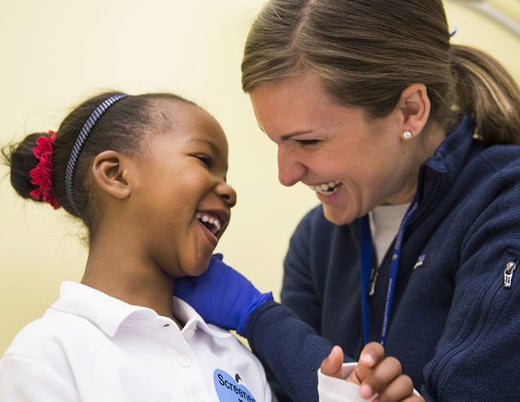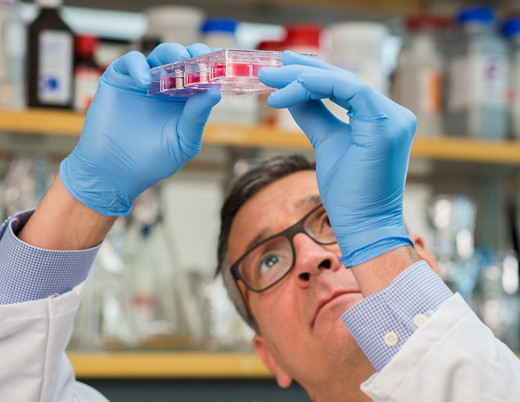Does more intensity to standard chemotherapy treatment improve survival in children with standard-risk ALL?
Researchers know intensified postinduction therapy improves survival in children with high-risk B-cell acute lymphoblastic leukemia, or ALL. So a multicenter, international study by Children’s Oncology Group that included more than 5,300 patients sought to understand if more intensity to standard chemotherapy treatment would also improve survival in children with standard-risk ALL.
Standard-Risk Acute Lymphoblastic Leukemia Child Survival Rate for Group Trial AALL0331
Led by Children’s Hospital Colorado pediatric oncologist Kelly Maloney, MD, from 2005 to 2010 and published in December 2019 in the Journal of Clinical Oncology, this Children’s Oncology Group protocol recorded very good outcomes for kids with standard-risk ALL as a whole. In fact, overall survival was 95% and continuous complete remission was 85% — higher numbers than previous protocols. But not entirely because treatment was given more intensively.
The higher numbers this time around were largely due to the protocol strategies that researchers imposed, particularly the two main modes they used to asses risk. These modes included looking closely at the biology of the leukemia cells themselves using techniques like molecular tests and examination of chromosomes, and factoring in minimal residual disease, or MRD.
A different way of grouping ALL patients
Looking at biology alone, patients with good biology risk features were placed into the standard-risk low group. Patients with neither good nor bad biology risk features were placed into the standard-risk average group. And patients with poorer biology risk features were placed into the standard-risk high group.
“But factoring in MRD added another classification layer,” says. Dr. Maloney. “Even if a patient had low-risk biology features but they didn’t respond as well to induction so their MRD was higher, they went into the standard-risk average or standard-risk high."
Some patients in the standard-risk average group were then randomized to a slightly more intensive post-induction therapy versus the standard. And for most, that more intensive treatment did not improve the overall survival or remission times. But for the standard-risk high group, who were assigned the full regimen, she says, it did.
“By modifying the risk groups and pulling out those high-risk kids, we learned that we gave the right amount of chemotherapy to the right group, which improved numbers as a whole.”
A takeaway for future ALL protocols
But there are still a large group of kids who don’t benefit from more intensive treatment, she says, and that takeaway was also key.
“It was good data to learn that standard-risk kids in this average group are probably getting as much classic chemotherapy as they need,” she says. “So what more can we add in that’s not classic chemotherapy? We’ve segmented, we’ve intensified where we can, and now we know we need new and different therapies for some groups of kids. Subsequent protocols are taking the best of what we learned here and continuing to adapt.”
Featured Researchers

Kelly Maloney, MD
Pediatric oncologist
Center for Cancer and Blood Disorders
Children's Hospital Colorado
Professor
Pediatrics-Hematology/Oncology and Bone Marrow Transplantation
University of Colorado School of Medicine





 720-777-0123
720-777-0123










